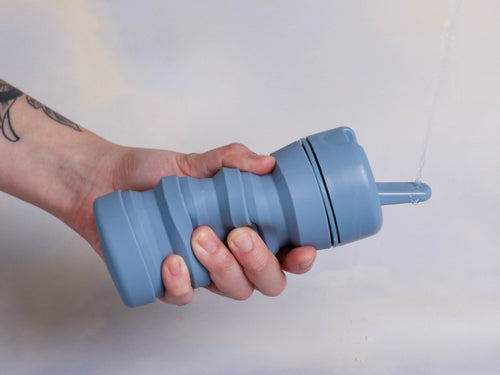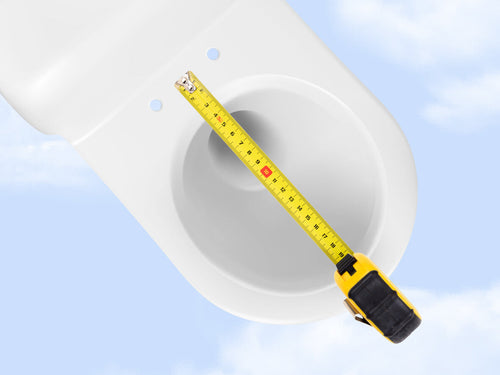Normally, you flush a toilet and go on with your day. But then… what happens? Like… where does the waste go? Well, simply put: it goes on a journey. From toilet bowl back to Nature, the wastewater treatment process is one of the most successful pollution management systems in our country. If you’ve ever wondered where poop goes to die or whether Shawshank Redemption is possible IRL, read on.
Big Pipes
If you think Ariana Grande has pipes, consider:
About 70 feet under our sidewalks, there’s a system of tunnels large enough for a semi truck to barrel through. Whatever water goes down the drain in your home, workplace or favorite restaurant first travels through private pipes in the privately owned buildings.
Around the sidewalk, these private channels reach small local pipes that lead to the big-and-wide tunnels. (Rain water from the gutters travels a separate set of tunnels directly to nearby natural water.)
The sewage pipe system is similar to the veins on a leaf, where tiny veins join increasingly bigger veins as they connect with the largest vein, the stem. In this analogy, the stem corresponds to a city’s “trunk lines”, the big-and-wide tunnels that carry waste to its treatment destination. For scale, imagine this: Los Angeles’s public sewage pipes run 6,700 miles, or more than twice the distance from NYC to LA. I mean… with that many miles, can we really say for sure that there aren’t mutant turtles kicking ass in our sewers?
But what pushes the waste through the tunnel to the treatment plants? Gravity. In this case, sh*t literally rolls downhill. Wastewater treatment plants are generally at low elevation areas, near rivers or other sources of water. Clever!
Wastewater Epicenter
Now we know how wastewater gets to the treatment plant, but then what? Well, it gets cleaned, silly! Here’s the process:
First, there’s a simple grate screening of the water, kinda like using a sink strainer at a massive scale. The water arriving at a wastewater treatment plant can have wood, car tires, construction material and other large, inorganic waste. Using grates gets rid of the largest solid materials, which then head to the landfill.
Then, the water moves up vertically for the only time in the entire process. In this pumping phase, inorganic material is removed down to the size of about a cigarette butt, and the remaining (still dirty AF) water is prepared for the next cleaning step: aeration.
Aeration is simply adding oxygen to the sewage, which causes dissolved gases to release from the water. This step also forces grit-sized waste, like sand and coffee grounds, to settle and allows the grits to be pumped out to landfills.
The next step is moving from aeration tanks to sedimentation tanks to remove sludge and scum. Here, the sludge (a.k.a. poo) settles to the bottom of the tank allowing it to be removed. Lighter scum (like grease, oil, plastic and soap) floats to the top, where it’s filtered out.
We’re nearly to the finish line! From sedimentation sorting, we move clean-looking water to tanks that remove waste we can’t see. Helpful microbes are added to the water to dine on the tiniest waste in the water. The final step is chlorinating the H2O to kill the helpful microbes after they’ve done their jobs.
It’s not a quick or painless process, but these steps get our water about 90% clean. This pretty-darn-clean H2O is then piped to the nearest body of water to let Mother Nature finish the job. Thanks, Mom!
Final FAQs
What shouldn’t go down the drain?
Basically anything other than poop and toilet paper. But a reigning enemy of the sewage system is “flushable” wipes. Even if they’re labeled “disposable”, make-up removing wipes and baby wipes wreak havoc when flushed.
First off, the wipes can get stuck in your own private pipes. This can seriously damage your home’s plumbing system, which could require a costly repair.
But sh*t really hits the fan when disposable wipes get to the trunk lines. The wipes get wrapped up with grease disposed from restaurants. Combined with grease, they make huge, dense, rock-like formations called “fatbergs” or “greasebergs.” At the height of the toilet-paper-maggedon in March, some cities were seeing huge fatbergs weighing hundreds of pounds. Our sewage systems are simply not designed to manage these formations. If you want a wet clean after you BM, opt for a TUSHY ;)
How do people working in the treatment facilities deal with the smell?
Well, it’s not like working in a bakery, but payday still smells pretty sweet. An experienced wastewater technician can make $85,000 a year. Plus, our olfactory receptors (read: smell smellers) basically get desensitized when hit with the same smell over time. Kindof like how a roadie for Black Sabbath probably doesn’t hear Ozzy Osbourne’s screams as clearly after decades of gigs. And if you had to, you could probably stick earplugs up your nose.
Could Shawshank happen IRL?
Short answer: no. Sewage isn’t just nose-hair curling. It contains gasses like hydrogen sulfide that can straight up knock you out! Unless Andy Dufresne and Red had gas masks, it’s unlikely they would have found their freedom via the sewers.



























